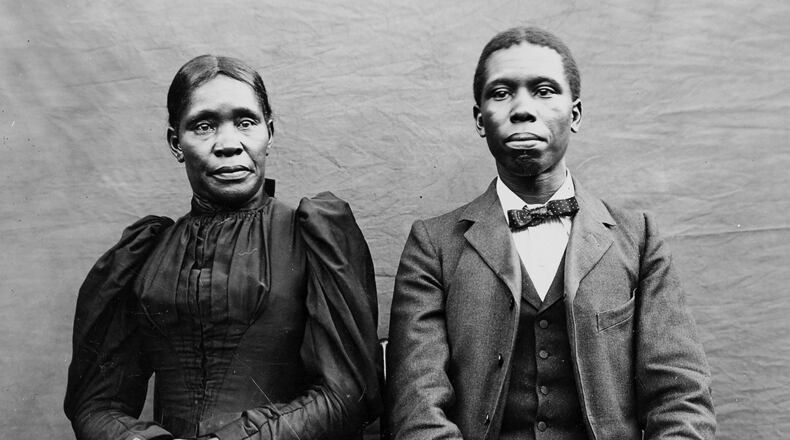Dunbar’s father, Joshua, escaped slavery and enlisted in the Union Army before settling in Dayton. His mother, Matilda, was born a slave in Fayette County, Ky., but despite being illiterate instilled a love for language in her son.
At age 6, Dunbar wrote his first poem, “An Easter Ode.” Six years later he recited that poem to the congregation of Eaker Street A.M.E. Church in Dayton, his first known public reading.
Life was difficult for the family. Lack of work and alcoholism led to divorce for Dunbar’s parents. Joshua died in 1885 when his son was 13.
Dunbar’s two older brothers dropped out of school to help support the family, but Matilda, who had a special bond with her youngest son who was a frail child, made sure Paul was educated.
Dunbar attended the Tenth Street Elementary School and then went on to attend Central High School, where he edited the Dayton Tattler, an African-American newspaper published by his classmate Orville Wright.
During high school his first published work “Our Martyred Soldiers,” a poem about Memorial Day, appeared in the pages of the Dayton Herald.
Credit: HANDOUT
Credit: HANDOUT
After high school Dunbar found career prospects limited for an African-American man. He worked briefly as a janitor at NCR, before finding work as an elevator operator in the Callahan Building in downtown Dayton.
While working, he scribbled down bits of poetry between calls and studied the dialects of the riders. That work eventually led to his first self-published book, “Oak and Ivy,” which he sold for $1 to the people who rode his elevator.
“Majors and Minors,” his second book of poetry, was published in 1896 and transported him to national acclaim. He toured the United States giving public readings and in 1897 sailed to London where he traveled in English literary circles.
Dunbar used his mastery of words to court Alice Ruth Moore, a literary figure in her own right, and the couple eloped in 1898.
Dunbar’s chronic health problems worsened. Diagnosed with tuberculosis, he sought relief through alcohol. Alice Ruth Moore left him in 1902.
The last three years of his life, Dunbar kept writing while his mother cared for him. He died Feb. 9, 1906, at age 33, and was buried in Woodland Cemetery.
WANT TO GO?
What: 30th Graveside Tribute to Paul Laurence Dunbar
Where: Woodland Cemetery and Arboretum, 118 Woodland Ave., Dayton
When: Friday, Feb. 8. The procession will begin at the Woodland mausoleum at 9:45 a.m. A wreath-laying and tribute will be held graveside, followed by a reception in the mausoleum.
The event is free and open to the public.
About the Author




